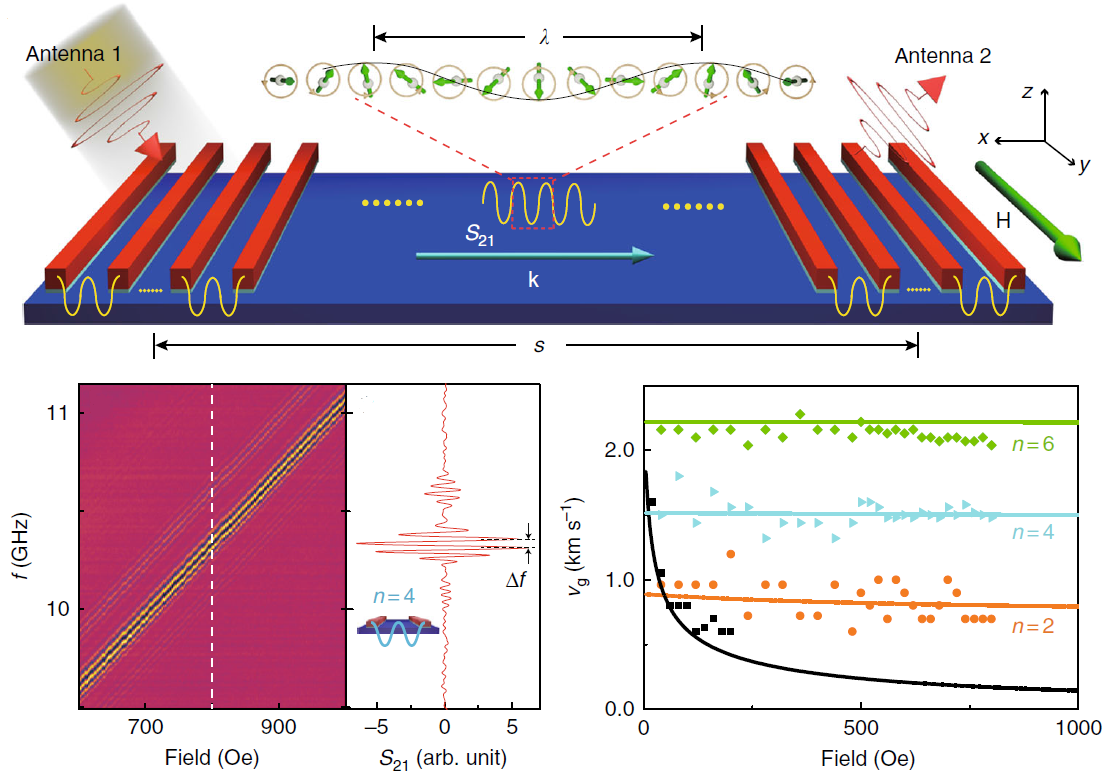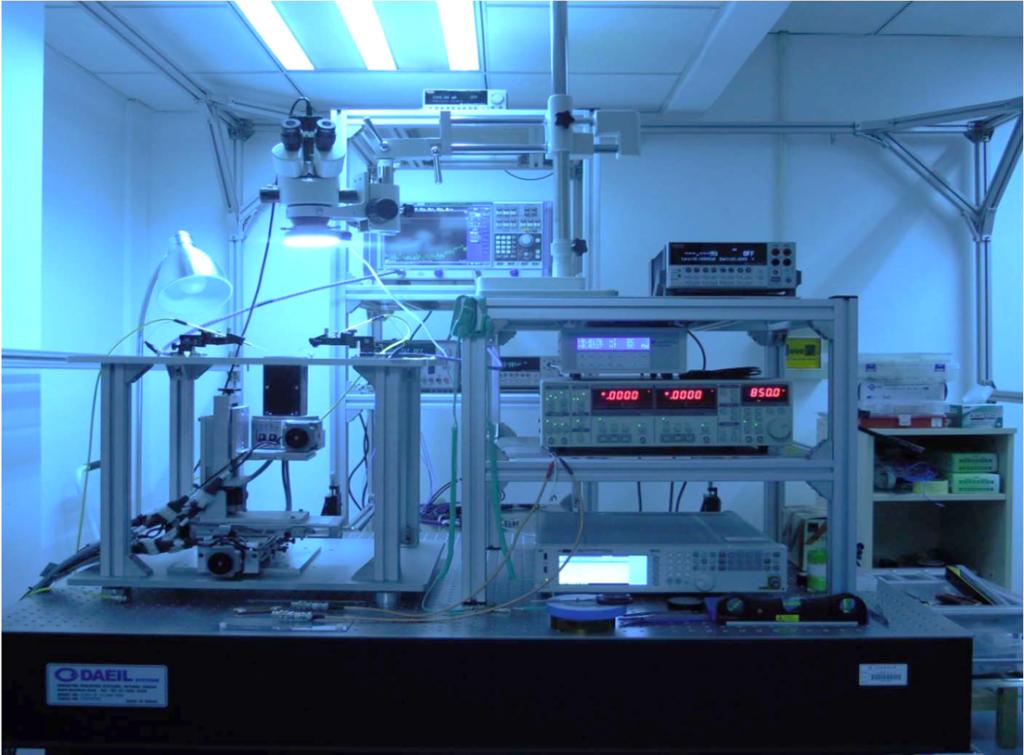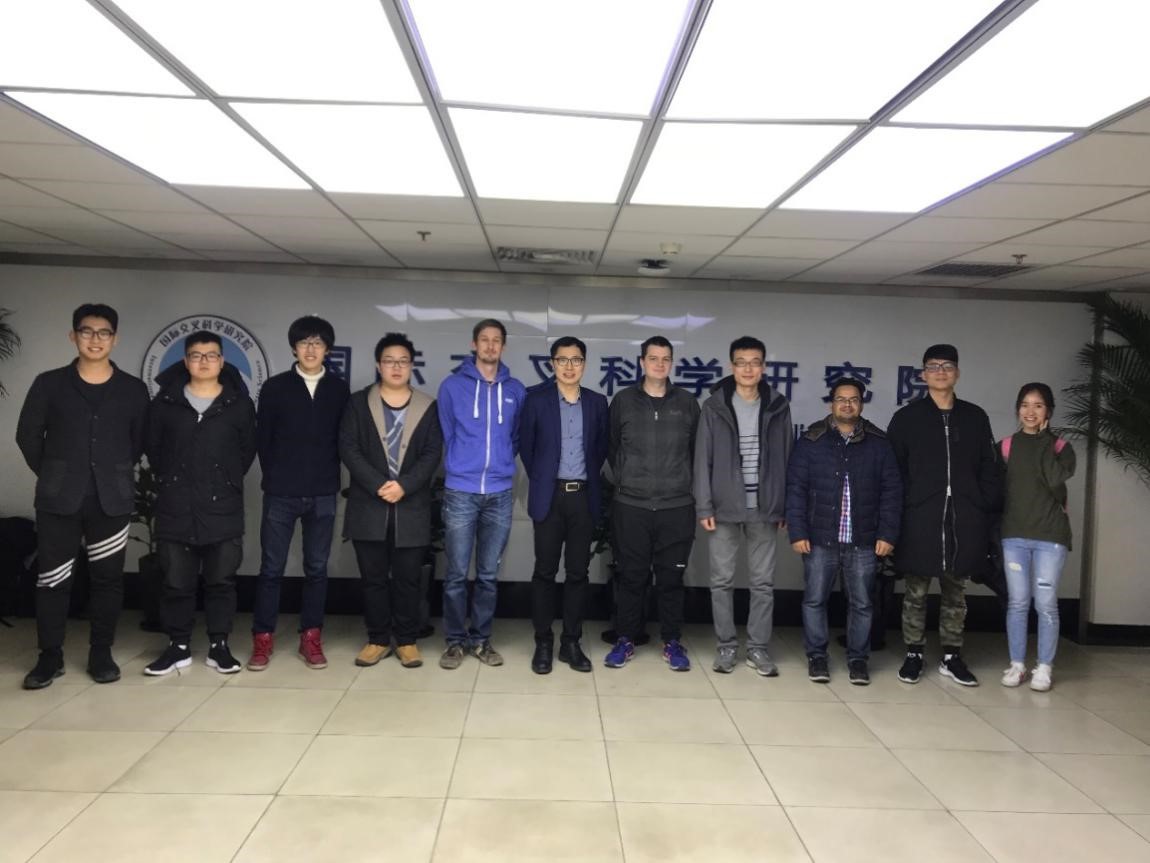Entitled “Long-distance propagation of short-wavelength spin waves”, a research published online by the team of Prof. Yu Haiming in Nature Communications reported an approach for the excitation of nm-wavelength spin waves. According to the findings, short-wavelength spin waves can be driven by the dynamical dipolar fields from the ferromagnetic nanowires grown on a 20-nm-thick Y3Fe5O12 film strip, with the shortest wavelength being 50nm over a distance as long as 60,000nm. This is the second article published in the journal by Spintronics Interdisciplinary Center of Beihang University in 2018. The work was supported by Beijing Advanced Innovation Center for Big Data and Brain Computing, the National Natural Science Foundation of China and the Recruitment Program for Young Professionals of the Thousand Talents Plan. Experts like Prof. Zhao Weisheng and Prof. Zhang Youguang from the School of Electronic and Information Engineering also provided guidance and help for the research team.

Fig. 1 Propagating short-wavelength spin waves and their group velocities
Spintronics 101
The flow of electrons in a specific direction is known as electric current, which is the basis for this era of electricity. The heating effect of the current, however, lowers the energy efficiency, and this problem is increasingly pressing for chip-intensive fields like storage and large-scale computing, because the integrated circuits of chips accommodate a growing number of components and produce mounting heat. Therefore, people have been researching into ways to reduce the heating effect of chips in order to improve their performance and efficiency.
A solution comes from the spin of electrons. As it is exactly 1/2, electrons can switch between two spin states under the effect of magnetic field, and the two states can correspond to 0 and 1 in the binary system, making it possible to apply electron spin tologic operation and storage. Furthermore, spin waves can propagate in nonconductors with no current and heating effect, so high-density and low-power devices based on electron spin have an unparalleled advantage over traditional ones.
Detection, Excitation and Propagation
Prof. Yu began to research on spintronics when he was in École Polytechnique Fédérale de Lausanne (EPFL). As soon as he started to work at Beihang in 2014, he and his team got down to building their own experimental equipment, for China has lagged behind in relevant fields and been banned from purchasing advanced equipment from abroad. With the support from the university, they strived for two years before completing an all-electrical spin wave detection system that takes the lead worldwide, and the system plays a pivotal role in the study of spin waves.

Fig.2 The all-electrical spin wave detection system
Another major issue is the excitation of short-wavelength spin waves and their long-distance propagation in ferromagnets. Short-wavelength waves can reduce the size of components and raise the level of integration, and the application of such waves can also speed up operations because of the higher frequencies they have. However, it was anything but easy to obtain short-wavelength spin waves. During the research, the highest spin wave frequency they needed to measure was beyond 30GHz, which was close to the limit of current measurement systems, so the team spent a long time calibrating and debugging the system to obtain convincing results and finally detected clear spin wave signals.
The material chosen by the team was Y3Fe5O12, a ferromagnetic insulator with very low damping coefficient, in which spin waves can propagate over a long distance. They used electron beam lithography to fabricate ferromagnetic nanowires on an Y3Fe5O12 film strip patterned by ion beam etching, and excited short-wavelength spin waves by the dynamic dipolar interactions in the film.

Fig. 3 Dispersion relations for propagating short-wavelength spin waves
An International Team
Now as a member of the School of Electronic and Information Engineering and Spintronics Interdisciplinary Center, Prof. Yu leads a young and innovative research team of doctoral students and postdoctoral fellows from multiple countries. In such a multicultural atmosphere, everyone can learn from good habits of other cultures and inspire each other in communication and discussion. For example, Tobias Stueckler, a PhD student from the Technical University of Munich (TUM), has impressed his Chinese teammates with his meticulous attitude towards research and strict time allocation between work and life. Moreover, the team uses English at group meetings to be better geared towards international communication and collaboration.
From day one, the team has been working closely with top research teams from such universities as EPFL, TUM, Colorado State University, Peking University, Beijing Normal University, and Fudan University Organized under the framework of Fert Beijing Research Institute, researchers of the team have reported their research developments at a number of international conferences and received recognition from peers around the world, gaining increasing influence in the field of spintronics.

Fig. 4 Prof. Yu’s team
Under the title of “Strong interlayer magnon-magnon coupling in magnetic metal/insulator hybrid nanostructures”, another paper by Prof. Yu’s team was accepted online by Physical Review Letters on April 24, 2018. In this research, strong interlayer magnon-magnon coupling was observed for the first time in the world, which will be conducive to breakthroughs in the design and application of spin wave devices. As the discipline of spintronics matures, it is reasonable to believe that the relentless efforts made by Spintronics Interdisciplinary Center will bring higher-level research achievements to this field in the future.
The paper published in Nature Communications:
https://www.nature.com/articles/s41467-018-03199-8
More information about Spintronics Interdisciplinary Center:
http://iriglobal.buaa.edu.cn/team/ResearchGroupLaboratory/61338.htm
Planned and written by Cao Jiahui
Reported by Tan Lisha and Li Mingzhu
Designed by Yang Yanzhuo
Edited and translated by Li Mingzhu
Reviewed and Released by GEOOS
Special thanks to the School of Electronic and Information Engineering
Please send contributions to geoos@buaa.edu.cn

